Worcester Living: In home filled with life and laughter, Kurtz family embraces community
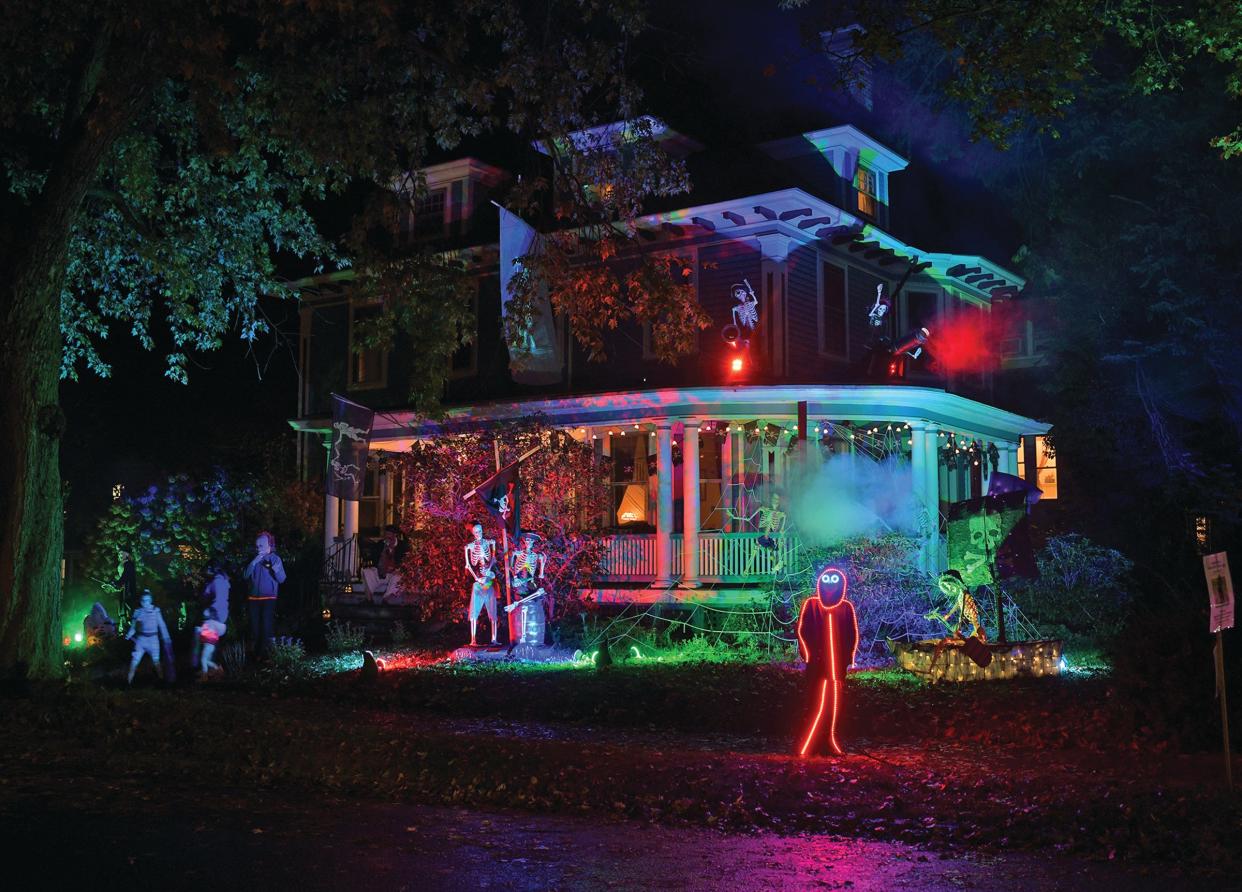
In 1908, when Dr. William Dolan and his family moved into their newly built home on Whitman Road in Worcester, they surely didn’t anticipate that skeletal pirates might one day fire cannons from the roof or climb up the rigging onto the front porch.
But that was 100 years before “the Windy Corner Crew” moved in. Since 2013, Heather and Devon Kurtz, along with four children, two cats and a dog, have made the Colonial Revival/Eclectic style home at the intersection of Whitman and Sagamore Roads a center of creativity, fun and kindness.
And that, among other things, means a big party for the neighborhood on International Talk Like a Pirate Day every September, complete with costumes, pirate language lessons, swordplay class, and a plank to walk.
“The family decided we needed our own holiday, and the kids picked Talk Like a Pirate Day,” says Devon Kurtz, noting that the piratical hijinks extend into Halloween.
This year, they added a tavern where children could exchange “dubloons” for seafoam (cotton candy), fish and chips (goldfish crackers and potato chips) or grog (root beer).
“Our kids manned the tavern in rotation,” Mr. Kurtz says.
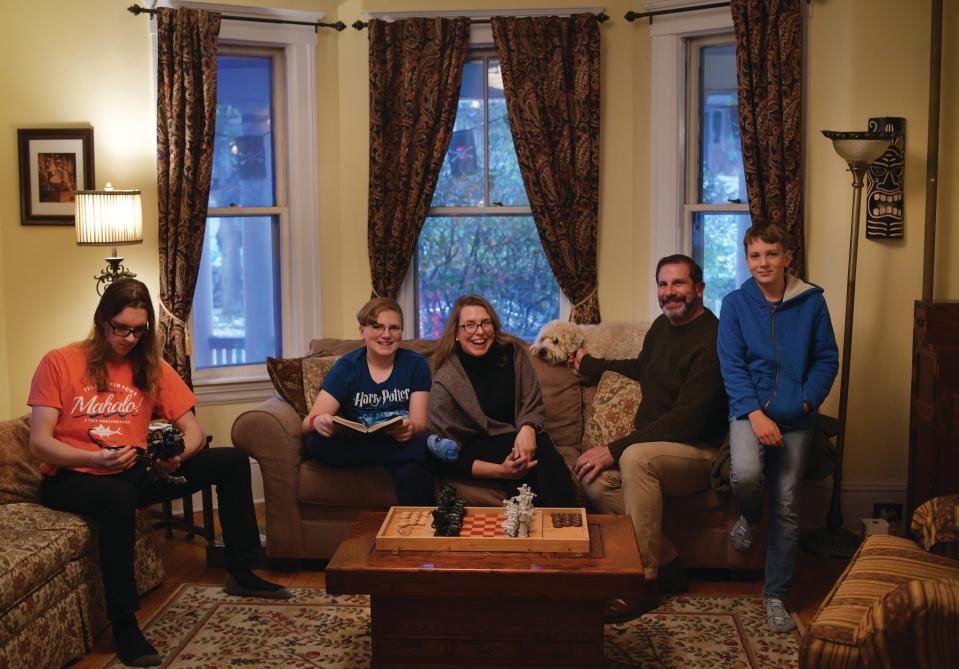
The house on Whitman Road, or Windy Corner, is named for the cross breezes that blow through the windows as well as Mrs. Kurtz’s love for E.M. Forster’s "Room with a View." It’s at the heart of the Montvale Local Historic District, developed in the late 19th century as Worcester’s wealthy began to seek greener space on the outskirts of the city. Now the older homes along tree-lined, curving streets combine respect for history with family life. Heather Kurtz estimates that there are 42 children living within a block and a half of their corner.
In December 2020, the Kurtzes took part in From Door to Door, Preservation Worcester’s city-wide celebration of local history, culture and architecture. (From Door to Door will be held this year from Dec. 5-31; for more visit www.preservationworcester.org.) The William Dolan house is beautifully preserved, many of its original architectural and cosmetic details intact. Bowed oriel windows at the front grace the second floor; below, a wraparound Tuscan porch overlooks the street. Inside, on the first floor, wide entryways in each room create an open perspective; pocket doors can slide closed to preserve quiet and privacy. A back staircase leading up from the kitchen to servants’ quarters on the third floor is just one reminder of times past.
“We are also neighbors to 36½ Whitman: the fairy house in the tree,” says Mrs. Kurtz, referring to the enormous Norwegian maple at the corner, where a tiny door affixed to the trunk might well open to limitless possibility. “Our second to youngest liked the idea of someone living in the tree. The boys thought the tree had its own spirit, and named it ‘Tree Beard.’”

Lest the fairy house sound apocryphal, she adds that the fairies also supported the From Door to Door program last year, with a mini sign posted in their yard.
“They have a serious petition in to the Worcester Historical Commission to change the door from its 1970s style to Queen Anne,” says Mr. Kurtz. (He is the current chair of the commission, coming to the end of his second term.)
Theirs is a second marriage, and the couple first noticed this particular home when they were dating and used to picnic at Bancroft Tower. It came on the market in 2012, and they moved in in March of 2013.
Both are professionals in the nonprofit world. Mrs. Kurtz, who currently serves as the director of foundation and corporate relations at the College of the Holy Cross, previously held the same position at Emerson College and also worked as the education director at the Higgins Armory Museum. As executive director of CultureLEAP for the City of Worcester, she “married all of the cultural organizations in Worcester to the K-12 public school curriculum,” she says.
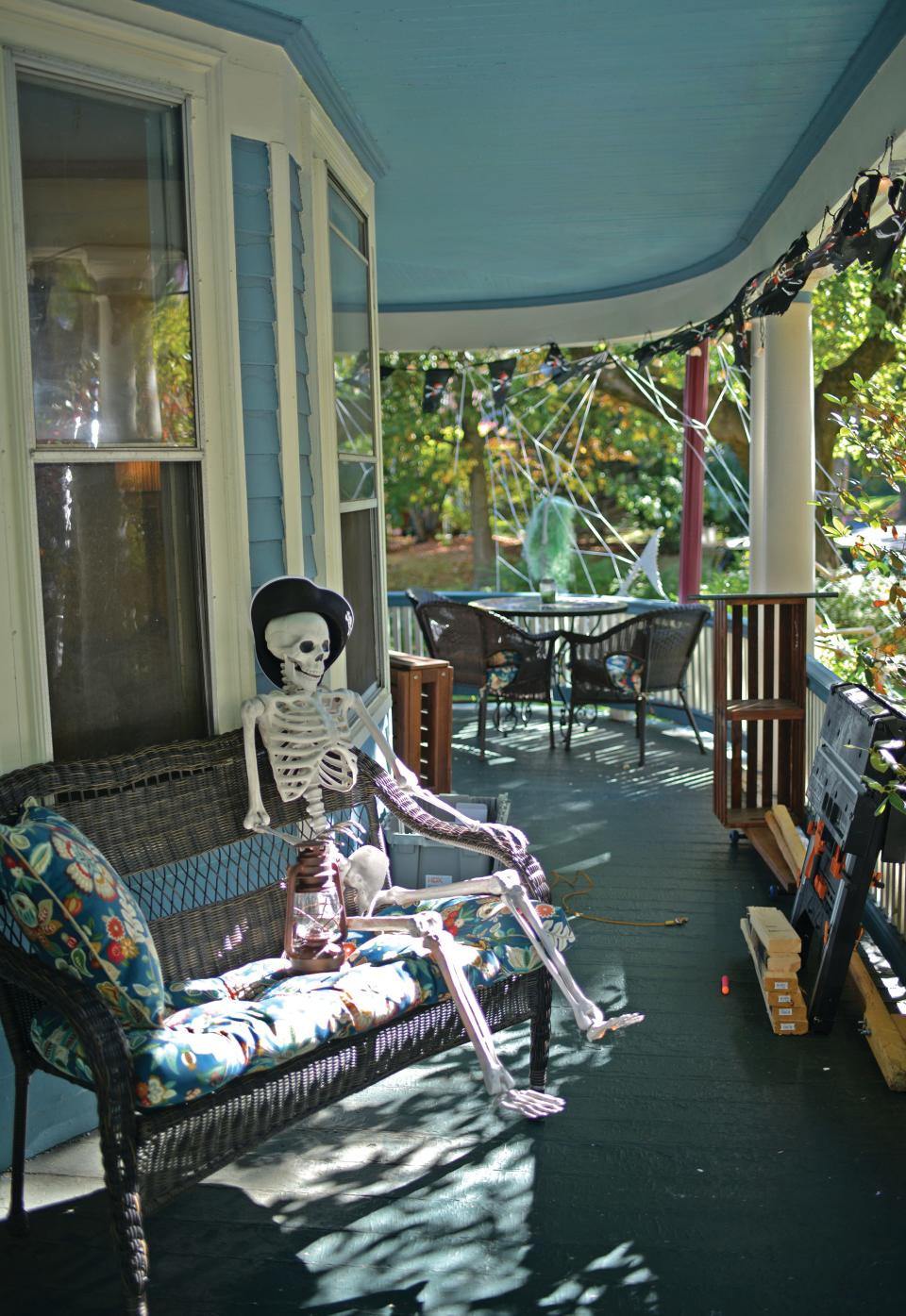
Mr. Kurtz is now the executive director of the Blackstone River Valley National Heritage Corridor. His previous positions include director of education both at Higgins Armory and at the Concord Museum, and coordinator of program development at Old Sturbridge Village.
The Kurtzes are only the sixth owners of the William Dolan House, and they gratefully acknowledge that the previous owner did much of the “big stuff,” including upgrading the electrical system, adding a new bathroom and renovating the kitchen by removing the pantry and turning it into a galley kitchen. At some point in the home’s past, the second-floor bedrooms were extended, enclosing an open area in front of the bow windows for closets.
The family fell in love with the wraparound porch, which is wide enough for a table and chairs at the curve and a sofa and chairs at the far end. For three seasons, the porch effectively becomes the outdoor living room.
“The kids know that until it's too cold to be out here with a blanket, we’re eating dinner outside,” says Mrs. Kurtz.
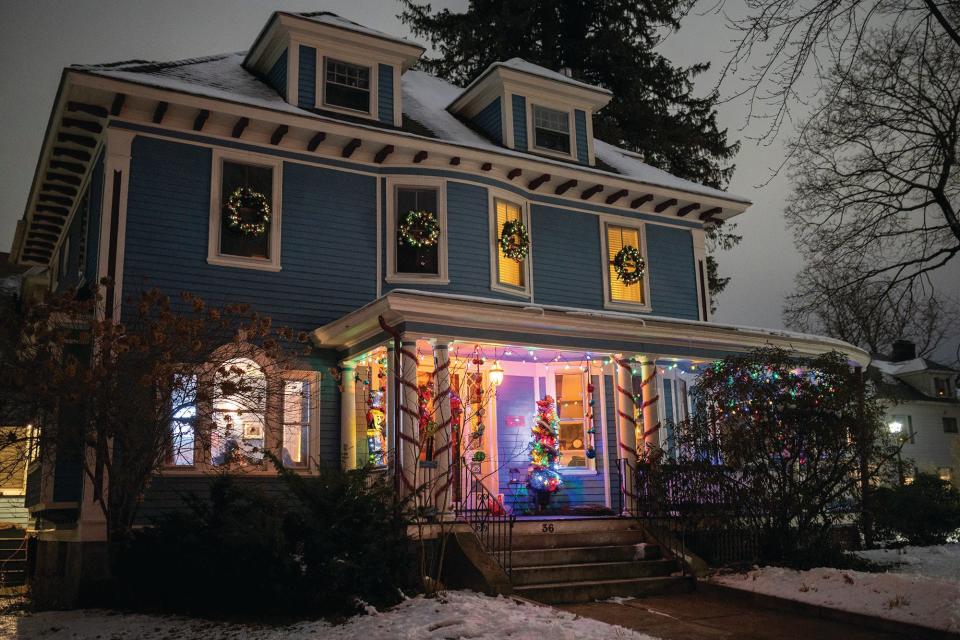
After they moved in, the Kurtzes changed the heating system from oil to gas, taking advantage of Mass Energy loans. The resulting short-term smell of burning oil meant that “Devon was like father in ‘A Christmas Story,’ except he doesn’t swear,” says Mrs. Kurtz.
“I had to learn to prime the furnace,” he says.
After a couple of years, they decided to repaint the exterior, replacing what Mrs. Kurtz describes as “taupe on beige on ecru” with a more vibrant blueberry blue and soft red and white accents. They have gradually added new landscaping, beginning with removing bushes that nearly reached the roofline and essentially hid the porch from view.
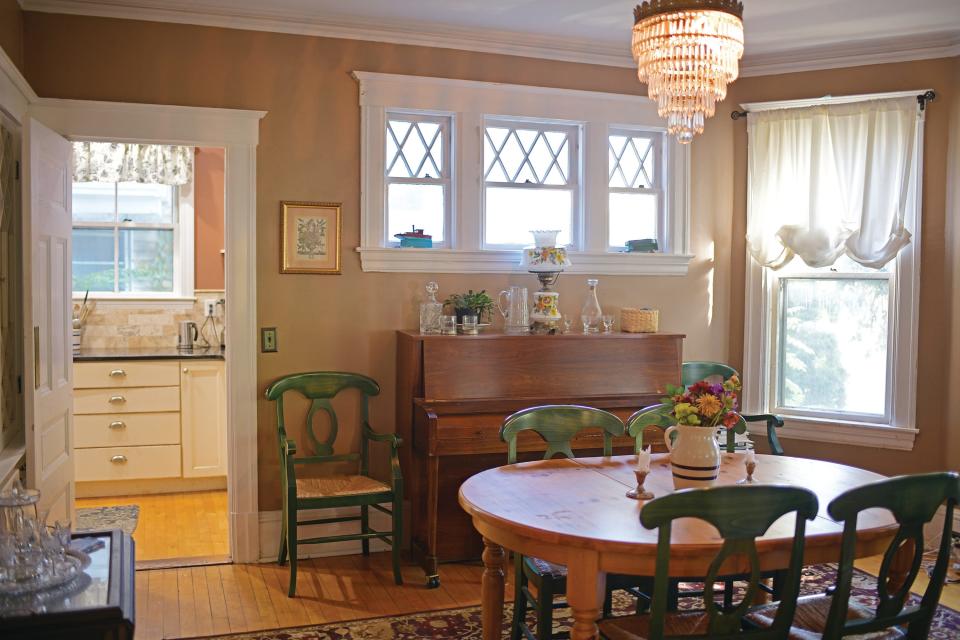
Mr. Kurtz is now in the process of repairing the original sash windows one by one, removing the molding and retying the weights onto new cording that had to be specially ordered.
“I watched ‘This Old House’ videos,” he says. “That’s how I learned how to prime the furnace, too. Between that and painting the house, I learned I’m a lot more handy with hand tools than I expected. I came from a roofing family, but growing up the push was to go to college and not work with your hands.”
This is first and foremost a family house, well lived in and well-used. And that was the intention from the start.
“We wanted it to be an alive, living home,” says Mr. Kurtz.
“Houses have a soul,” says his wife. “If they’re too empty, they can start to die inside.
"Some older houses can feel creepy. This one is just warm. The feelings inside are so happy.”
The children, from Mrs. Kurtz’s first marriage, range in age from 10 to 21. With one child each in elementary, middle, high school and college, there is a sense of “all moving all the time,” she says.
“We live in every room,” she continues. “We eat in the dining room; we have one television, and it’s in the family parlor.” The kids play games, do projects and entertain friends all over the house.
The structure of the home suits everyone, the layout downstairs in particular allowing for one big space or individual rooms as needs demand.
“When the kids have friends over, they can have dinner in the dining room and shut the pocket doors,” says Mrs. Kurtz. “The older kids appreciate privacy, and the little kids love being all together. (Devon and I) can sit in the parlor and see what’s going on. The dog loves just running around like crazy.”
The older Kurtzes are almost always at the center of the fray. Their common background in museums and public program organization ensures that “there is no boredom here,” says Heather Kurtz.
From exploring new decorations for Talk Like a Pirate Day or plans for a lemonade stand, “We’ve never been bored,” she says. “We come up with ideas when we have coffee in the mornings at 5 a.m.: we ask, ‘wouldn’t it be fun if …?’ Some go, some don’t.”
That sense of creativity stood them — and the entire neighborhood — in good stead during the long lockdown for COVID-19. With all four children and two adults working from home for months, the house’s flexibility made it possible for each to be in a separate room. They set up an architectural lab first in the dining room and then in the basement, so their oldest child, usually away at college, could do her lab work for her courses.
To break the spell of an eerily quiet full house, everyone working separately on Zoom and wearing headphones, the family spent every afternoon outside: hiking, kayaking, playing frisbee, flying kites. The field behind Forest Grove Middle School became an outdoor respite, as did Bancroft Tower. There were giant Nerf gun battles and laser tag after dark.
“We use our neighborhood like that,” says Heather Kurtz. “We were doing some of those things before but not to that degree. We’re still doing those things. Now it’s just what we do.”
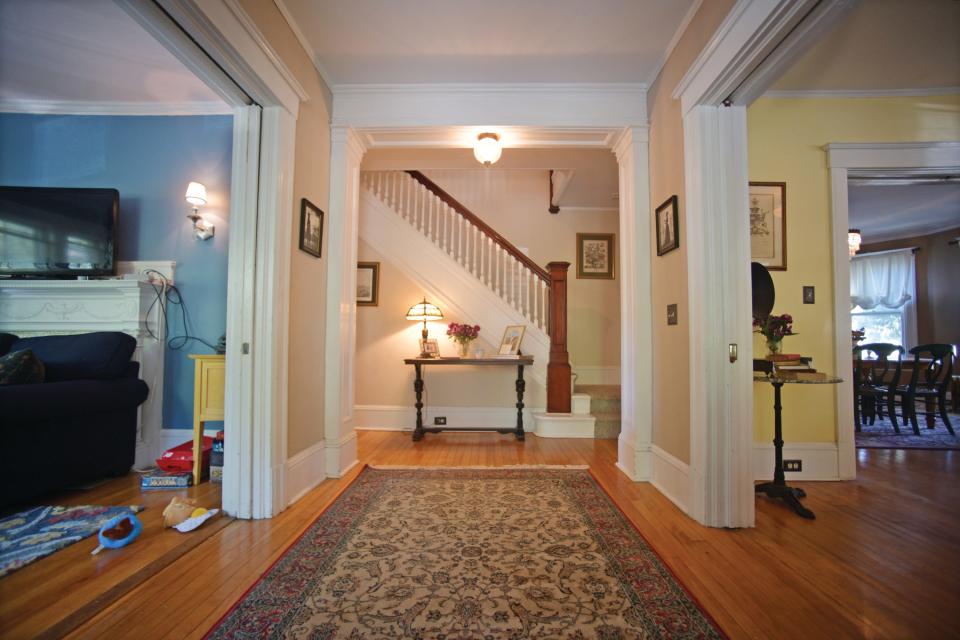
The neighborhood, fondly called “a Victorian development” as one of the city’s first planned areas, grew close during the lockdown. Neighbors hosted get-togethers in their driveways. Mr. Kurtz taught all of the children to walk on stilts and make foam swords. He had visions of a fleet of fruit crate scooters, based on one he built out of crates and a two-by-six plank, but he couldn’t find roller skate wheels and the prototype was too speedy.
“None of them will ride it,” he says with some chagrin. “Even the 21-year-old only went half a block and jumped off. We didn’t know it was going to go that fast.”
Much more successful were his encouraging signs, posted at each end of their property along the sidewalk. Changed weekly, they urged people to “Waltz like Beauty and the Beast” or “Sing Your Favorite Camp Song.”
“We’d sit on the porch and watch people waltzing,” says Mrs. Kurtz. “(The signs) brought joy and made us smile, too. You do need to spread the joy, even if it’s a little bit kooky.”
For her and her husband, that approach is essential for Worcester's growth and well being. “It’s so satisfying to work in the city, live in the city, and see how all those experiences can contribute back to the city,” she says. “If you live here, really live here. It’s not just your house. It’s what you bring to the home, to the neighborhood, that makes a community.”
As the holidays near, neighborhood children are focused on one particular tradition at Windy Corner. Every year, Santa Claus sets up a mailbox in their front yard, right near the fairies’ house. It’s a direct connection to the North Pole.
“Santa has been known to leave responses a couple of days later,” says Mr. Kurtz. “Last year, the elf delivered 65 letters. It’s a magical mailbox.”
This article originally appeared on Telegram & Gazette: Worcester Living: Kurtz family home filled with love and laughter

